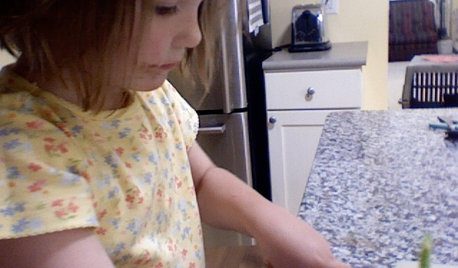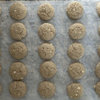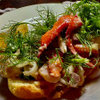Suggestions for a half-vegetarian family
ssdarb
10 years ago
Related Stories

LIFEInviting Kids Into the Kitchen: Suggestions for Nurturing Cooks
Imagine a day when your child whips up dinner instead of complaining about it. You can make it happen with this wisdom
Full Story
TRADITIONAL HOMESHouzz Tour: Reviving a Half-Finished Farmhouse in New England
This 1790s foreclosure home was flooded and caved in, but the new homeowners stepped right up to the renovation
Full Story
GARDENING GUIDESBackyard Birds: How to Care for American Goldfinches
The American goldfinch is a bright-in-the-summer visitor and one of the only vegetarian songbirds. Here's how to give them a healthy habitat
Full Story
BATHROOM DESIGNShould You Install a Urinal at Home?
Wall-mounted pit stops are handy in more than just man caves — and they can look better than you might think
Full Story
BATHROOM DESIGNPowder Room Essentials to Keep Guests Happy
Set out these bathroom necessities (hello, hand towels) to make your company comfortable and your parties run smoothly
Full Story
BATHROOM DESIGNKey Measurements to Help You Design a Powder Room
Clearances, codes and coordination are critical in small spaces such as a powder room. Here’s what you should know
Full Story
BASEMENTSBasement of the Week: Fishing-Focused Spaces Lure the Family In
This rustic retreat hosts the dad's hobby miscellany, but the entire family has caught on to the appeal
Full Story
LIFEDecorate With Intention: Finish That Room!
Got a half-finished space begging for a polished look? These solutions can motivate you to take some essential decorating action
Full Story
MOST POPULAR9 Real Ways You Can Help After a House Fire
Suggestions from someone who lost her home to fire — and experienced the staggering generosity of community
Full Story
FEEL-GOOD HOME15 Cozy Book Nooks and What They Want You to Read
Put the beach reads away; these comfy spaces are creating a fall reading list. What books do they suggest to you?
Full Story




annie1992
Islay_Corbel
Related Discussions
Half my Family makes me nuts!
Q
need ideas for elegant vegetarian/fish main dish
Q
Vegetarian Chili
Q
Blank canvas, a narrow family room with half vaulted ceiling
Q
sally2_gw
azzalea
sleevendog (5a NY 6aNYC NL CA)
grainlady_ks
Redwing72
ssdarbOriginal Author
sally2_gw
Lars
cj47
lpinkmountain
lpinkmountain
Cloud Swift
Annie Deighnaugh
lpinkmountain
gwlolo
grainlady_ks